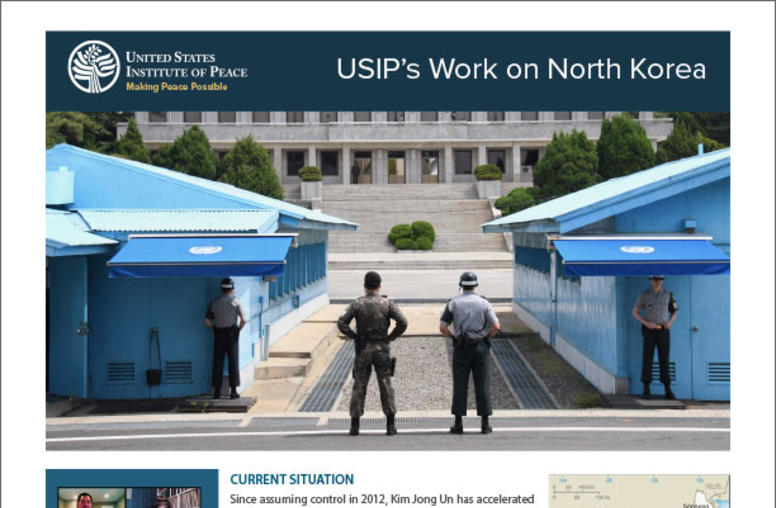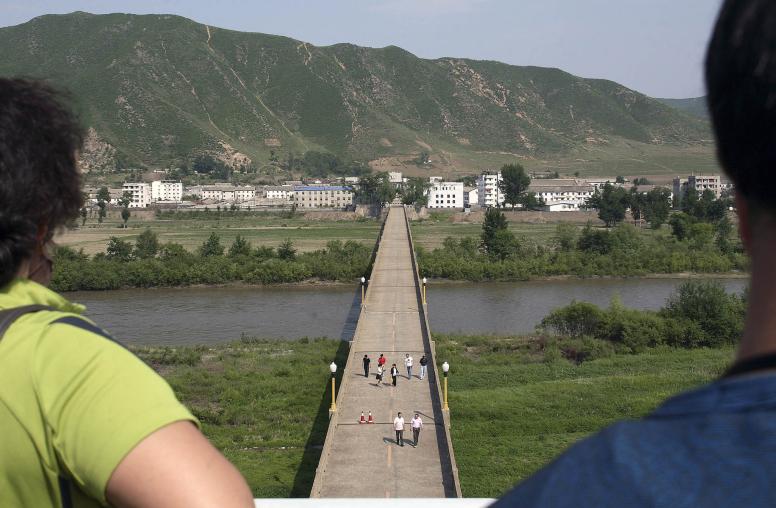Six Past Mistakes Trump Can Avoid in Talks with North Korea
The Trump administration’s guiding philosophy for negotiating with North Korea is to “not repeat the mistakes of past administrations.” With the summit between President Trump and Kim Jong Un now set for June 12 in Singapore, it is important to identify these past mistakes and how to avoid them.

The White House has already warned against two previous missteps. First, it will not relieve sanctions against North Korea until the regime takes concrete steps toward denuclearization. Second, it will not accept a prolonged negotiation process where North Korea extracts concessions while buying time.
These principles seek to avoid the miscues of past diplomatic efforts like the 1994 Agreed Framework and the Six Party Talks, which endured for multiple years, stunting but never terminating North Korea’s nuclear and missile programs. Some analysts also assert that Washington has too often let up on pressure too early.
Here are additional past mistakes the United States should avoid:
Keep your team on the same page. Poor policy coordination within administrations has often undermined diplomatic progress. In September 2005, a U.S. Treasury Department sanction on a Macau bank, which led to $25 million of North Korean funds being frozen, dampened the effects of a breakthrough denuclearization agreement that the State Department negotiated a few days later. Even today, mixed messaging by administration officials on denuclearization approaches is threatening to derail the June 12 Trump-Kim summit.
Avoid vague agreements. Past deals with North Korea collapsed when the U.S. paid insufficient attention to details. In the 2012 Leap Day Deal, Obama administration negotiators claimed that satellite launches were specifically included in a freeze on long-range missile tests. Not having this in writing, however, left Pyongyang some wiggle room, which it used later to conduct a satellite launch.
Likewise, the Agreed Framework addressed the dismantlement of North Korea’s reactor at Yongbyon but didn’t cover uranium enrichment. So, North Korea’s efforts to develop a covert enrichment program later that decade, while going against the spirit of the deal, did not technically violate it.
In this year’s negotiations, there will be many areas of ambiguity, such as the scope of denuclearization and verification, that will require the administration to make sure the language is unfailingly precise. Any agreement should include verification measures upfront.
Ensure stronger bipartisan support. Disagreements about North Korea policy between political parties and across administrations have undermined the U.S. ability to follow through on its commitments. Two weeks after the Agreed Framework was signed, the Republican Party took over Congress, making the deal a “political orphan.” The Republican-led Congress refused to pay for the oil shipments to North Korea required under the deal. Some analysts believe that continual delays in shipments and other U.S. foot dragging may have led to Pyongyang’s decision to develop a secret enrichment program.
If the Trump administration wants to achieve a sustainable agreement, it should consider ways to ensure support from both its base and Democrats. To increase the chances that the deal lasts beyond this administration, Trump’s team should pursue a Senate-approved treaty, rather than an executive agreement like the Iran deal.
Use diplomacy to resolve disputes. In 2002, the Bush administration used evidence of North Korea’s secret uranium enrichment program to terminate the Agreed Framework. In response, North Korea withdrew from the Nuclear Non-Proliferation Treaty in 2003, conducting its first nuclear test in 2006. Some experts believe that Washington should have tried instead to resolve the enrichment issue within the Framework instead of discarding the agreement. This time around, a dispute resolution mechanism should be included to prevent sides from backing out easily and ensure goalposts aren’t moved.
Devote political will early. Under previous administrations, North Korea was considered a third-tier security concern. The Clinton administration expended little political capital on implementing the Agreed Framework, instead hoping for the regime to collapse.
Similarly, the Bush administration focused on preventing Iraq from developing weapons of mass destruction, despite more compelling proof of North Korea’s prohibited programs. To his credit, Trump has made North Korea a top foreign policy priority, seizing the opportunity to deal directly with Kim Jong Un. But ongoing domestic political scandals could make North Korea a secondary issue or, even worse, a diversionary tool.
Engage directly with North Korea first. Views differ on whether Washington should negotiate with Pyongyang bilaterally or in a multilateral format. Some negotiators have favored the use of bilateral negotiations.
The meeting between Kim Il Sung and former President Jimmy Carter in 1994 is often credited with laying the foundation for the eventual Agreed Framework. However, the Bush administration rejected this approach, believing the bilateral nature of that deal ignored the views of South Korea, China, and Japan and left the U.S. to foot the bill.
Today, the administration is splitting the difference, choosing to deal directly with Kim Jong Un first while coordinating with Six Party partners separately — perhaps shifting to a multilateral process later. It remains to be seen whether countries like Japan will object to writing a check on the back end if Washington and Seoul don’t bring them in early.
Avoiding these past missteps doesn’t guarantee that the U.S. won’t make new mistakes, but it may increase Trump’s chances of achieving an enduring agreement.
This piece was originally published on The Hill.



